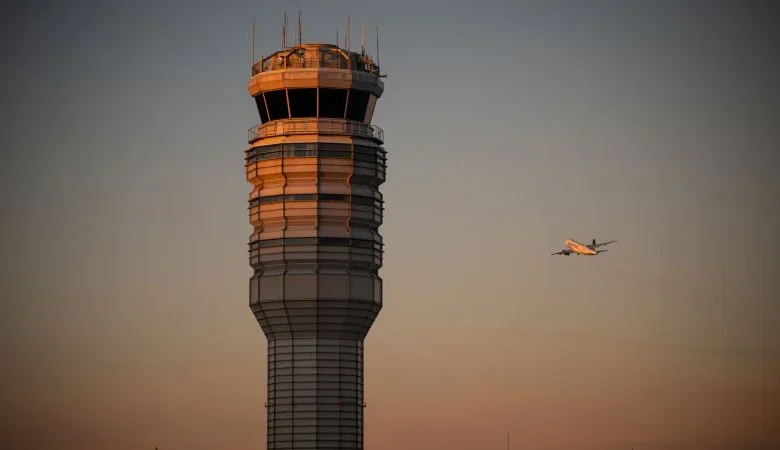When the shutdown ends, air travel will still take a long time to get back to normal

Washington
—
While the government shutdown may soon be in the rearview mirror, it could leave air travel in a chokehold for months, and possibly years, to come.
Until a deal is officially inked, airlines must continue to follow the Federal Aviation Administration’s emergency order to incrementally reduce flight capacity at 40 major US airports, up to 10%. Starting Tuesday, 6% of flights will be cut.
The order calls for airlines to cancel flights seven days before they are scheduled to fly, and once they are canceled and passengers are informed, they can’t easily be reinstated.
“There are significant challenges with these cancellations inside an airline, because it’s not easy to cancel randomly every day on 10% of our schedules and keep preserving those cancelations,” said Eash Sundaram, former chief digital and technology officer of JetBlue Airways. He now is the president of a technology venture fund called Utpata Ventures. “The airlines should be thinking about how hard it’s going to hit them in the next two to three weeks on the cancellations, and then the recovery process happens after that.”
If controllers come back to the job, pilot and aviation consultant Kit Darby thinks it might take airlines a “week or two” to snap back.
“If we can’t get it done this week (to end the shutdown), we’re starting to get to the point where it won’t be fully recovered by Thanksgiving,” Darby said. “I think if they do it this week, we can be very close to fully recovered by Thanksgiving.”
However, passengers’ plans are in the hands of lawmakers to achieve a deal and secure a more reliable travel experience as the winter holidays creep closer.
Even when the government officially reopens, the number of controllers showing up to work might not immediately bounce back.
Essential FAA employees who have worked during the shutdown will not immediately receive back pay, and some may choose not to return to work right away.
The National Air Traffic Controllers Association said some of their members have taken second jobs and those side hustles may continue until they get their missed paychecks.
Nick Daniels, president of the union, said it took two to two and a half months for controllers to get all their back pay after the last shutdown in 2019.
President Donald Trump demanded Monday all controllers “get back to work, NOW” on Truth Social, recommending a bonus of $10,000 per controller who didn’t take time off during the shutdown. Transportation Secretary Sean Duffy later agreed with that sentiment, promising to work with Congress to reward controllers.
Darby said in his experience, controllers go “above and beyond.”
“They work extra hours, extra days,” Darby said. “Been doing it for a long time, have been poorly treated. But that’s just their nature.”
Some air traffic controllers will never return to their jobs and are retiring or quitting to find work where they will not be subject to government shutdowns.
Duffy told CNN, prior to the shutdown, only four controllers were retiring per day. Since the shutdown began, that’s changed to 20 to 25 retirees per day. Earlier this year the Department of Transportation offered bonuses to retirement aged controllers to stay on the job longer to help relieve the existing shortage, but the shutdown seems to be working against that effort.
“It’s going to be harder for me to come back after the shutdown and have more controllers controlling the airspace,” Duffy told CNN on Sunday. “So, this is going to live on in air travel well beyond the timeframe that this government opens back up.”
“We’re going to have to find out how many actually resign, how many retired due to this shutdown, and truly start assessing all the different impacts the shutdown has,” Daniels said.
Going into the shutdown, the nation’s air traffic control system was short by more than 3,000 workers, and a new effort to “supercharge” hiring this year has now been jeopardized by it.
In September, before the shutdown, the DOT said it met its hiring goals for the year by recruiting more than 2,000 people. The FAA’s air traffic controller academy in Oklahoma City was the “busiest” it has ever been, an FAA official told CNN in July, with roughly 800 to 1,000 more trainees in the pipeline than a year ago.
Classes at the academy have continued during the shutdown but left some students questioning if a job where they could have to go for weeks without pay is something they want to pursue, Duffy said. Some students have dropped out as a result.
The funding to pay trainees is also running out, he said last month. Would-be controllers get stipends to make ends meet as they go through schooling. If that stops, it “will be cataclysmic for them,” he said.
Perhaps the worst outcome would be if a deal takes a longer to come together or if it falls apart and the shutdown continues on for weeks more.
On Sunday, eight Democrats joined with Republicans to advance the federal funding measure in exchange for a future vote on extending enhanced Affordable Care subsidies.
The House would also have to return and adopt the deal struck in the Senate before it is sent to President Donald Trump’s desk to be signed.
The busy Thanksgiving travel period is just weeks away, and without a deal Duffy warned air travel could slow “to a trickle.”
“I think we’re going to see air traffic controllers, very few coming to work, which means you’ll have a few flights taking off and landing at different airports across the country,” Duffy said. “But for the thousands of flights that happen every day to move people around the country for the great American holiday, it’s not going to happen.”
If the shutdown has not been resolved at the end of this week, there is a big risk Thanksgiving travel could be disrupted, said Henry Harteveldt, president of Atmosphere Research Group. If the shutdown is resolved no later than the end of this week or even this coming weekend, then airlines should have enough time to reassemble their schedules and get flights back operating at normal levels by the time it is Thanksgiving, he added.
Duffy even hinted Friday at hypothetically cutting capacity up to 20% of air traffic if the shutdown drags on.
“If (a 20% cut) happens, the US air transportation system will be crippled,” Harteveldt said. “It will be very, very difficult for travelers to get where they are going for Thanksgiving, because airlines will have exhausted all of the easy light cuts.”





